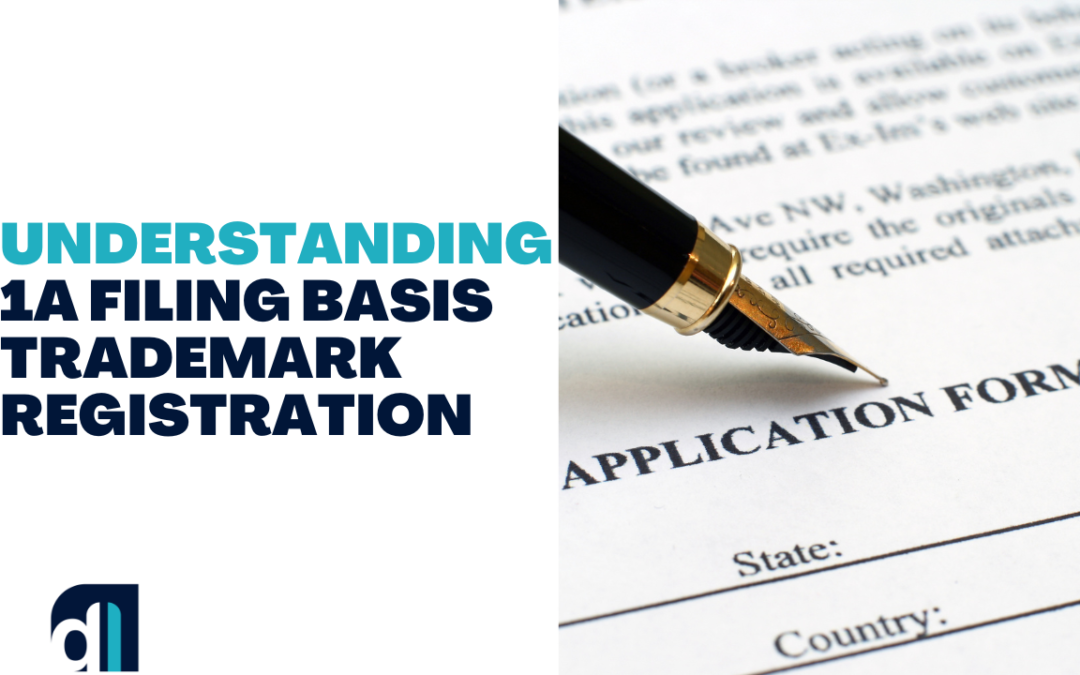In the ever-evolving world of trademarks, understanding the different aspects of the registration process is crucial for businesses of all sizes, especially small-medium enterprises (SMEs). One essential element in this process is the ‘filing basis.’ Today, we focus on guiding brand owners through the complexities of the 1(a) filing basis for trademark applications in the United States.
The Concept of a Filing Basis in Trademark Applications
In trademark applications, a filing basis refers to the grounds upon which an applicant files their trademark or service mark application. Depending on your situation and the nature of your business, the United States Patent and Trademark Office (USPTO), through the trademark electronic application system (TESS), allows for multiple filing bases in the same application, with each filing basis aligning with different sections of the Trademark Act.
Understanding the 1(a) Filing Basis
The 1(a) filing basis, or the ‘use-based application,’ is applicable when the mark you intend to register is already in use across state lines, US territories, or between the US and a foreign country. The use in commerce refers to the legal commerce that US Congress can regulate. The term ‘commerce’ here is all the serious business in which federal law gets a say, not just trading baseball cards with your cousin across the state line.
To successfully apply with a 1(a) filing basis, the USPTO requires a verified statement of actual use and a specimen, i.e., a tangible example of the mark’s use in the course of business. Examples could range from product packaging to a screenshot of a website where the mark is clearly visible.
Actual Use vs. Intent-to-Use Applications
You may wonder, what is the difference between an ‘actual use’ and an ‘intent-to-use’ basis application? The distinction is clear-cut. A 1(a) actual When it comes to submitting a trademark application, it’s essential to have a clear understanding of the difference between a 1(a) intent-to-use application and a 1(b) intent-to-use application. If you’re already using your mark commercially, then a 1(a) application is the route to take.
On the other hand, if you have a genuine intention to use your mark in the future, then a 1(b) application is the way to go. It’s important to note that if you fall into the latter category, your application will be based on a 1(b) intent-to-use basis. It’s also worth mentioning that in some cases, you may be able to claim a priority filing date based on a foreign country application.
This can be incredibly beneficial, as it can provide you with a significant advantage when it comes to securing your trademark. earlier foreign filing. As per Trademark Act Section 44(d), foreign application basis, if you filed a foreign application within six months before your US application, you can claim the earlier foreign filing date as your US application filing date.
But remember, to claim a priority claim, the foreign application must be for the same mark and the same goods/services as identified in the US application.
The Role of the Examining Attorney and Overcoming Office Actions
Post submission, your trademark application is assigned a serial number and reviewed by an examining attorney at the USPTO. The examiner reviews the application to ensure it complies with all applicable rules and statutes and approves it for publication in the Official Gazette.
If any issues are identified that could prevent the mark’s registration, the examining attorney will issue an office action outlining these matters. An office action is an official document detailing your application’s procedural or substantive issues. Responding to office actions promptly and comprehensively is crucial to moving your application toward registration.
Foreign Registration Certificate and the 44(e) Filing Basis
Foreign applicants can leverage their foreign registration certificate to file under the 44(e) foreign registration basis. This clause of the Trademark Act offers foreign applicants reciprocal registration rights, essentially acknowledging the legitimacy of the trademark registration from the applicant’s home country.
A step by Step guide on how to file a trademark application on a 1 (a) basis can be found here.


Sahil Malhotra
Sahil Malhotra is an Intellectual Property Attorney, who founded Drishti (“vision”) law because of his vision in protecting dreams and ideas.
He provided individuals and small businesses with an opportunity to enhance their IP’s value by helping them register trademarks and successfully argue against office actions. In addition to his training and experience, he has been deeply involved in the multifaceted IP portfolio at UIC and continues to be associated with IP organizations and conferences.
To know more about Sahil Malhotra — Click Here
You may follow Sahil Malhotra on Facebook: Sahil Malhotra and on Instagram: @Sahil Malhotra

